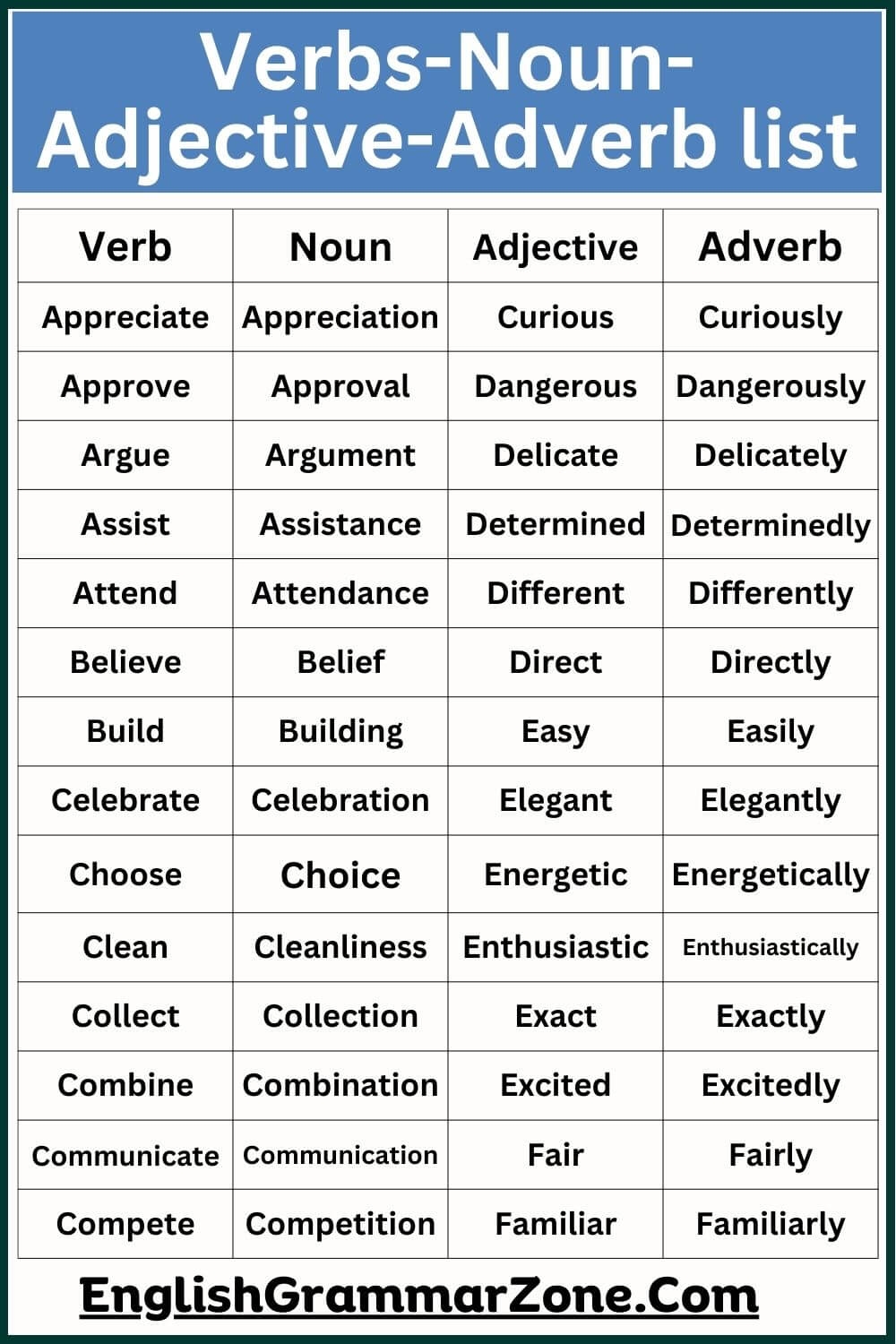When it comes to understanding the English language, grammar plays a crucial role. One important aspect of grammar that often goes unnoticed is the use of noun adverbs. Noun adverbs are words that modify or describe a noun, providing more information about the noun in a sentence. They help to add depth and clarity to the meaning of a sentence, making it more precise and impactful.
Whether you are a student learning English as a second language or a native speaker looking to enhance your writing skills, understanding the role of noun adverbs is essential. By incorporating noun adverbs effectively in your writing, you can convey your thoughts and ideas more effectively, making your writing more engaging and compelling.
The Role of Noun Adverbs
Noun adverbs can be used in various ways to modify a noun in a sentence. They can provide information about the time, place, manner, frequency, or degree of the noun. For example, in the sentence “The car is parked outside the house,” the word “outside” is a noun adverb that describes the location of the parked car.
Furthermore, noun adverbs can also help to specify or limit the meaning of a noun. For instance, in the sentence “I want to buy some books,” the word “some” is a noun adverb that indicates a non-specific quantity of books that the speaker wants to purchase.
By using noun adverbs effectively, you can add detail and precision to your writing, making it more vivid and engaging for your readers. Noun adverbs help to paint a clearer picture in the minds of the readers, allowing them to better understand the context and meaning of your sentences.
Moreover, noun adverbs can also help to create a more rhythmic and cohesive flow in your writing. By using a variety of noun adverbs that complement the nouns in your sentences, you can enhance the overall structure and readability of your writing, making it more enjoyable for your audience to read.
In conclusion, noun adverbs play a crucial role in English grammar by providing additional information about nouns in a sentence. By understanding and incorporating noun adverbs effectively in your writing, you can elevate the quality of your work and communicate your ideas more clearly and effectively. So next time you write a sentence, remember to consider the use of noun adverbs to enhance its impact and clarity.
